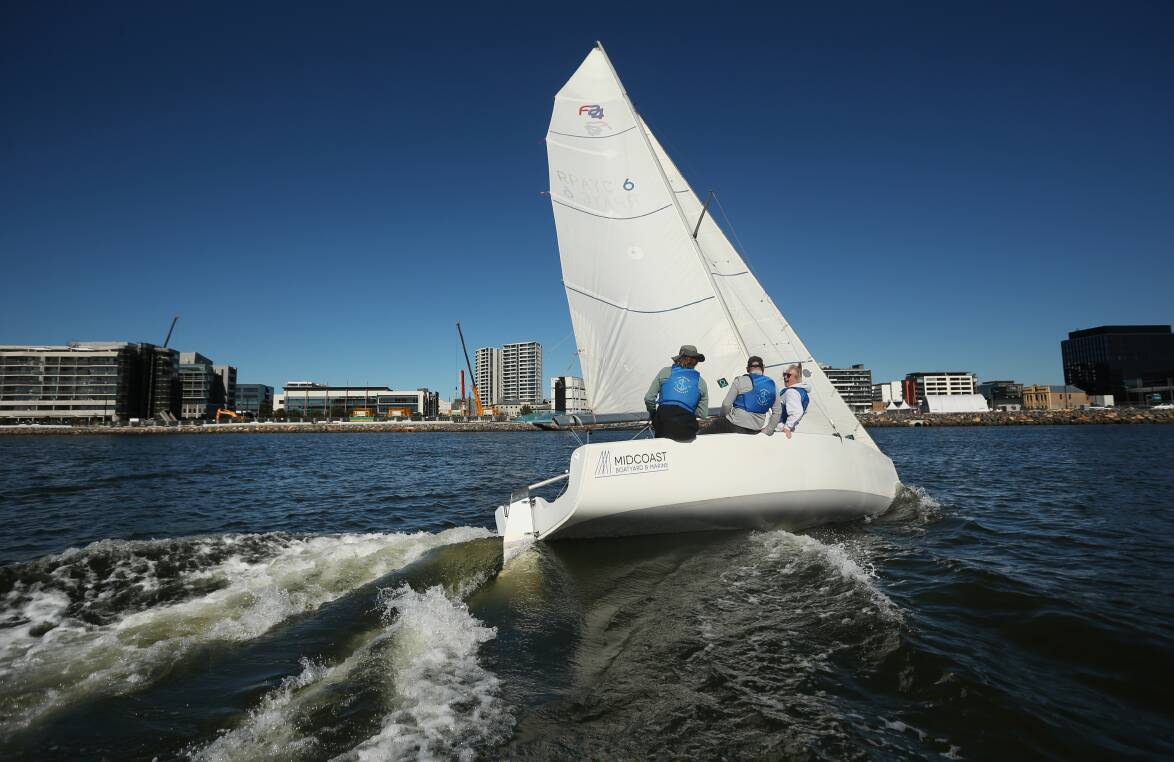
TOM Jones has come back to where it all began for him.
The 83-year-old sits on the harbour's edge, where it bends from Honeysuckle to Wickham.
"I haven't been down here for a while, so I'm enjoying the view," Mr Jones says. "It's a lovely view, but if you like looking at the working harbour and jobs ..."
His voice trails off, as he gazes at the water that cradles many millions of dollars worth of recreational boats moored in the nearby Newcastle Cruising Yacht Club marina.
Asked what he prefers looking at, Mr Jones replies, 'I think the working harbour with jobs."
His answer is understandable. Tom Jones' working life revolved around the working harbour.
For more than 40 years, he was a seafarer. That life's journey began here on the bend in the harbour.
Tom Jones was a child of the harbour. He grew up in Wickham, and the harbour, particularly along this stretch, was his playground.
"It was everything living here, because you used to go down to Carrington and go mud crabbing and dig for worms in the mudflats at low tide," he says. "Come over here and get a feed of fish, little tailor, and take them home. Even went into the drain, slogging mullet."
The "drain" is Cottage Creek. As part of the revitalisation of Honeysuckle, the final reach of Cottage Creek, before it enters the harbour, has been beautified. The severe concrete walls have been replaced with rocks and plants, so that it looks less like a stormwater drain and more like something capable of holding life.
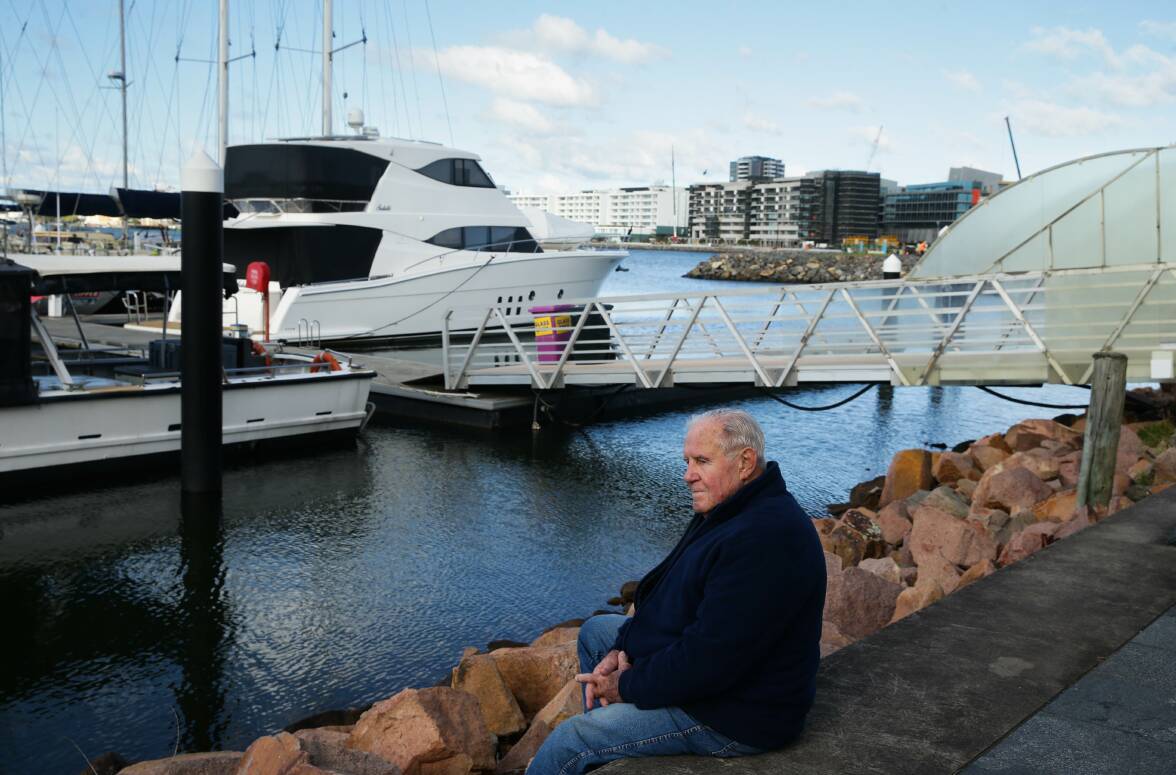
Many of those living in the Wickham area when Tom Jones was a boy worked on the wharves or went to sea. So it was inevitable that young Tom saw his future over the horizon. In March 1957, when he was 18, Tom Jones signed on as a cabin boy on a BHP ship, the Iron Kimberley.
The teenager cruised out of Newcastle harbour, bound for Yampi Sound, off Australia's north-west coast, to load iron ore for the steelworks.
For about 17 years, Thomas Jones worked on the BHP ships around the Australian coastline.
In 1975, Mr Jones returned to local waters, to that bend on the Wickham shore, where he played as a kid. The ship he joined would unload fuel near that bend at what he called "the tanker berth". And the ship he joined was not only built in Newcastle, it was christened with a name wrapped around this harbour: the John Hunter.
"I joined her when she was built here at the dockyard," Tom Jones says.
"When we left port here for the first time I'll never forget it. The electrician rigged up the loudspeakers in the control room and he played this beautiful music and piped it all over the harbour. And we had all our [firefighting] monitors spraying water as we sailed out through the harbour in a salute really to the workers who built the ship here in the first place. It was in recognition of the good job that they'd done."
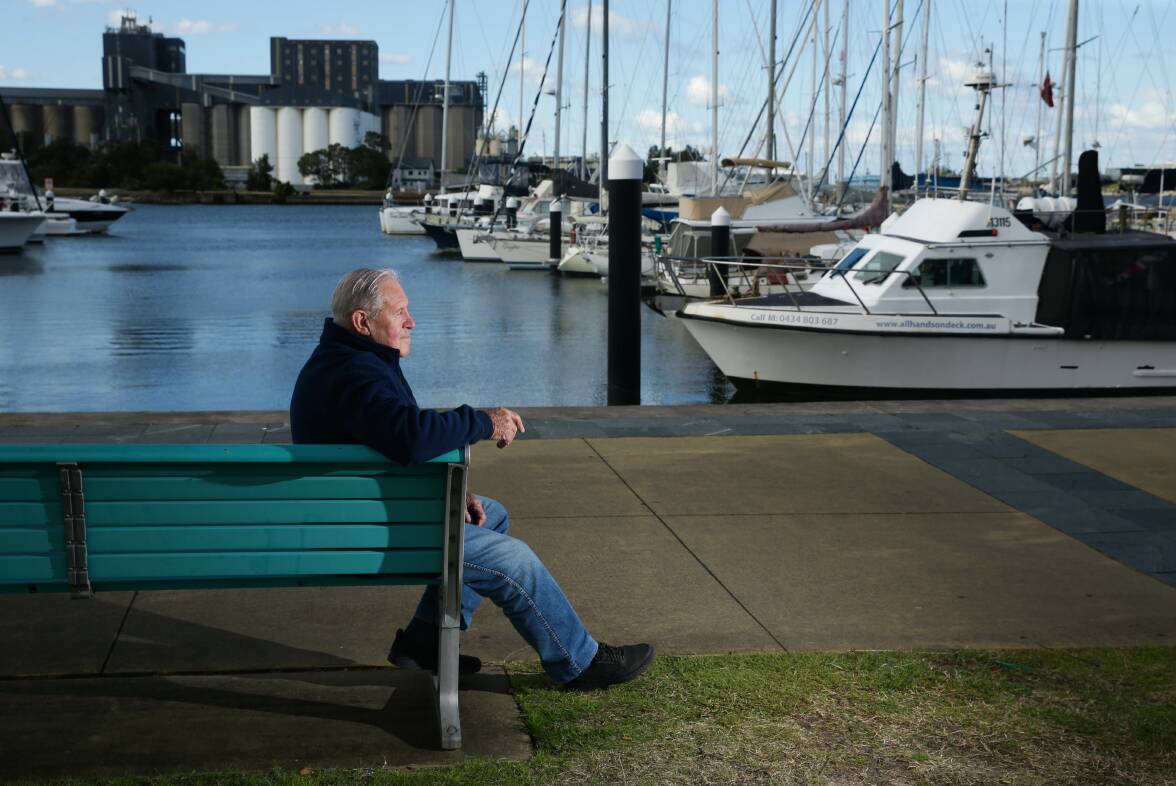
Tom Jones worked on the John Hunter for about 14 years, delivering fuel to ports along the coast on what was known as "the milk run". But there was one port he loved coming into. His home port.
"You come through Nobbys, and you just looked at Nobbys, and that was a highlight of any seaman's trip, I think," he says. "Beautiful. Coming home. Lovely."
The retired seafarer continues to survey the bend, where he spent his youth and his John Hunter days. He gets his bearings as to where the ship used to berth to discharge fuel. These days, fuel is unloaded a little further out of the city, up the river at Carrington, Walsh Point and Mayfield. That is hardly the only thing that's different.
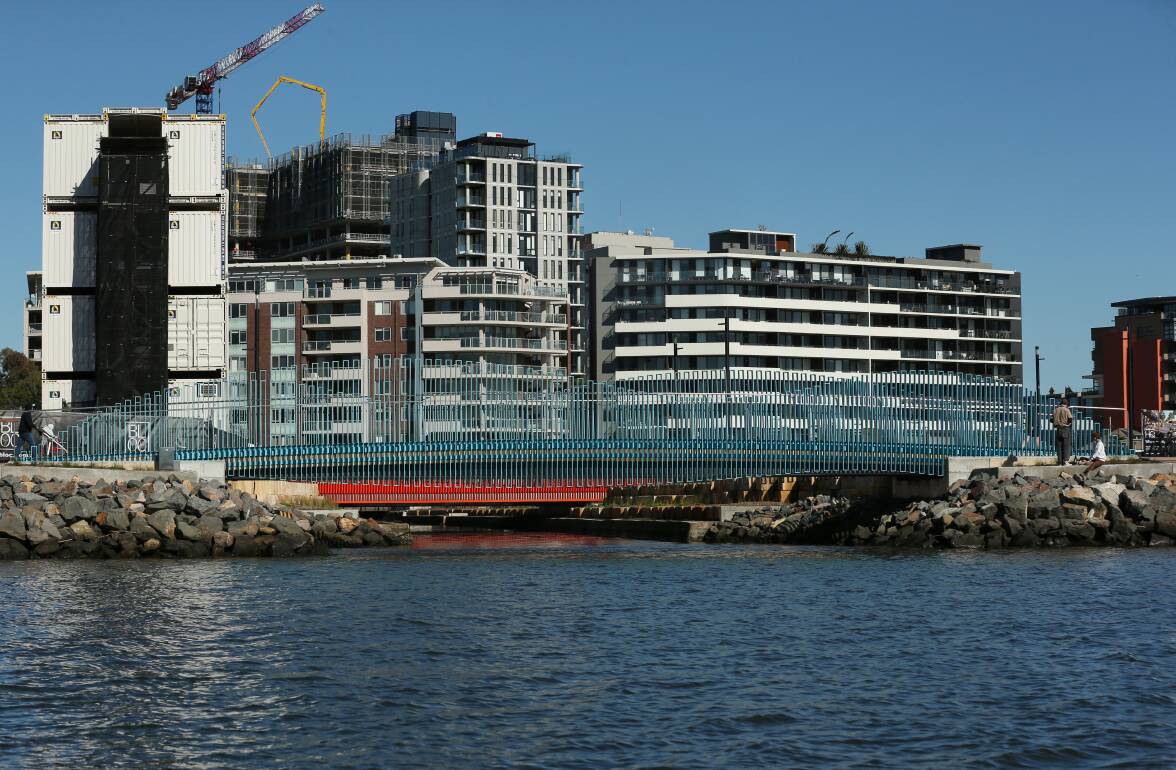
What Tom Jones is looking at is a long way from what is in his mind's eye.
"It's unbelievable," Mr Jones mutters. "Look at this now. It's all wealthy yachts."
He looks over to Honeysuckle, where ships once lined the harbour's edge, now colonised by luxury apartments. The glint in his eye remains, even if his brow is furrowed.
"I'm not against progress, but if we go too far this way, it'll be like the Gold Coast. And this is a working harbour. This is where Newcastle was built, from this harbour. To me, all your industries went out from the harbour. And it should remain a working harbour, rather than just a high-rise, Gold Coast type of thing.
"Look at it now. It's just a row of very similar looking buildings. I'd like to have seen ships there. Especially ships that we [Australian mariners] manned. That would've been better."
Still, while it may not be the view he would like, Tom Jones' heart remains here on the harbour.
"It's home, mate. It's home. I just love this place."
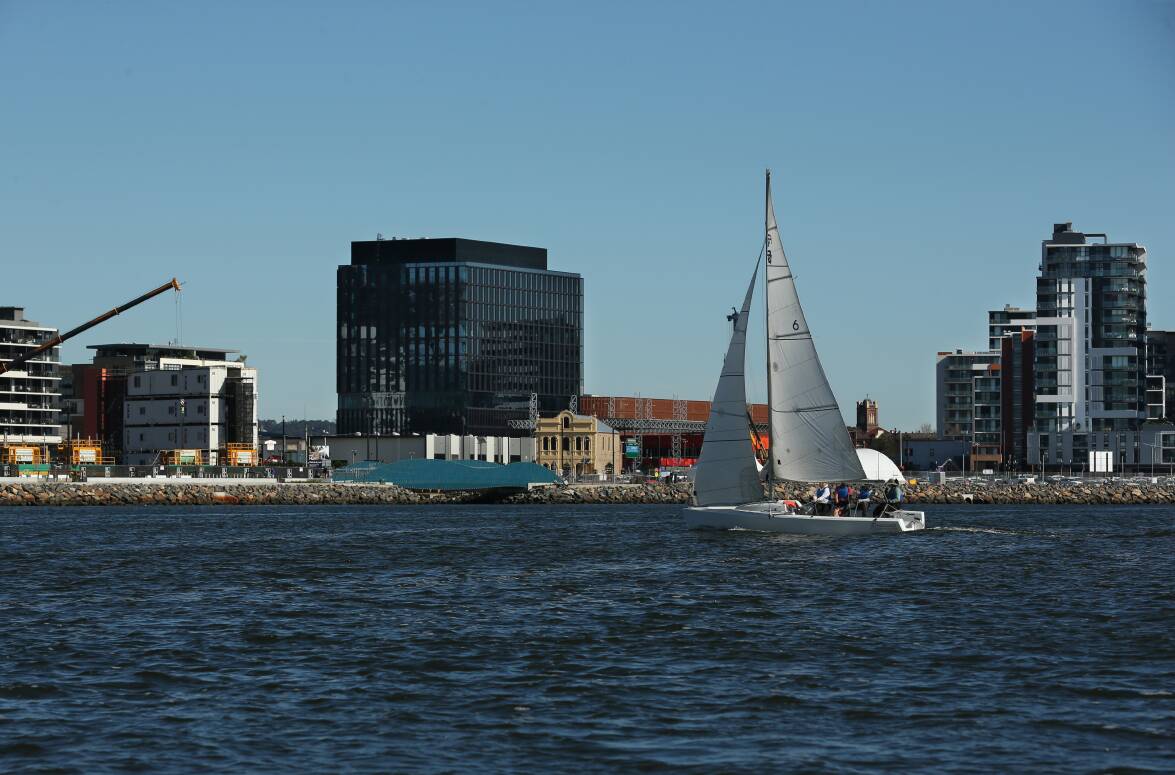
THIS may be a working harbour, but it is also increasingly a recreation ground.
Nowhere is that more evident than outside Newcastle Cruising Yacht Club (NCYC). Along the Wickham shore, about 180 boats bob in their berths in the club's marina.
According to marina manager Matt Williams, those craft come in all shapes, sizes - and price points.
"We've had boats that are historical through to brand new and worth up to $20 million," he says.
But boats aren't made to just sit idly in berths. So what brings the harbour to life is when the club is holding events.
Just about every day during the warmer months, sailing craft are skittering across the water in competition, or they are scooping up the breeze in the pursuit of pleasure. The club also has a sailing academy, where instructors teach the art of harnessing the wind and students learn the ropes.
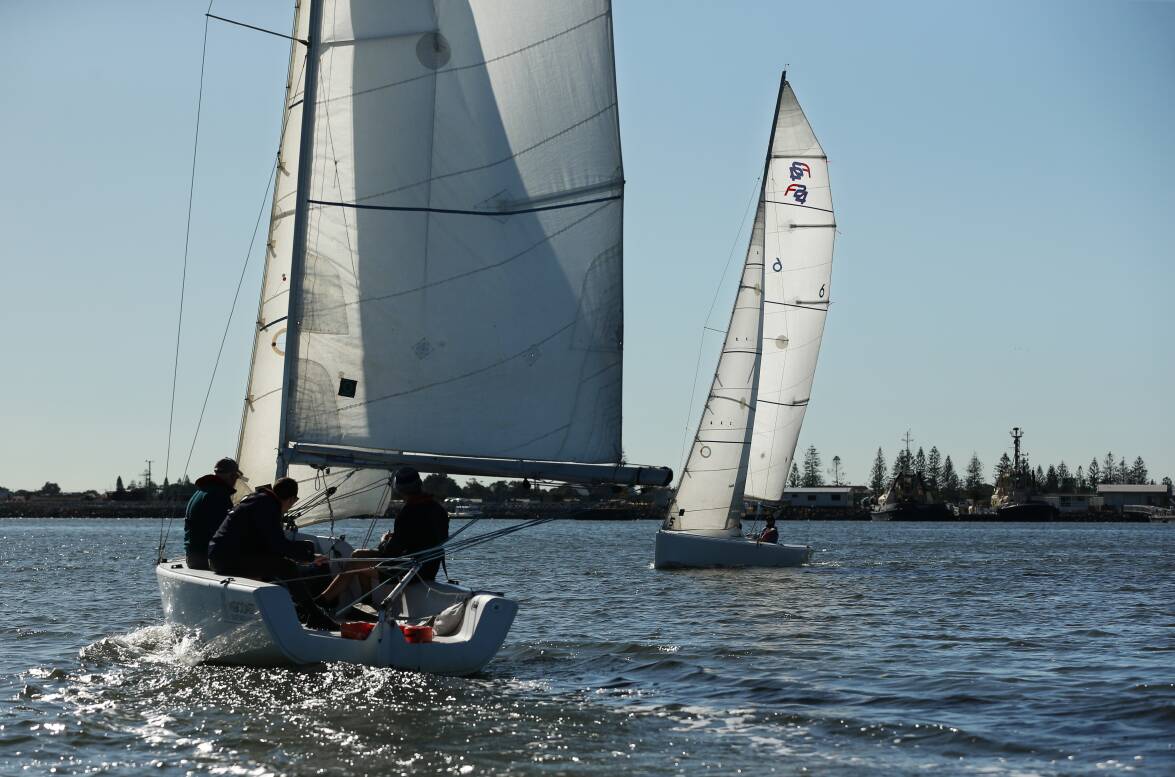
"At the core of our constitution is activating the harbour, transitioning the harbour beyond just coal activity," explains the club's marketing coordinator, Ethan Tucker.
"It's always been thought of as a working port, but there should be a mix."
The club is crossing the water, establishing what it calls a Sailing Centre of Excellence on the opposite shore at Carrington, in front of the ship repair facility now operated by Thales Australia. So recreation and industry will share the same shore.
Ethan Tucker explains the facility will be used to store and launch dinghies and larger sailboats. He expects it will be operating this summer.
"It gets a bit hectic during regattas," says Mr Tucker. "So it will be good to have a separate facility.
"It's a great step towards expanding the on-water activity footprint."
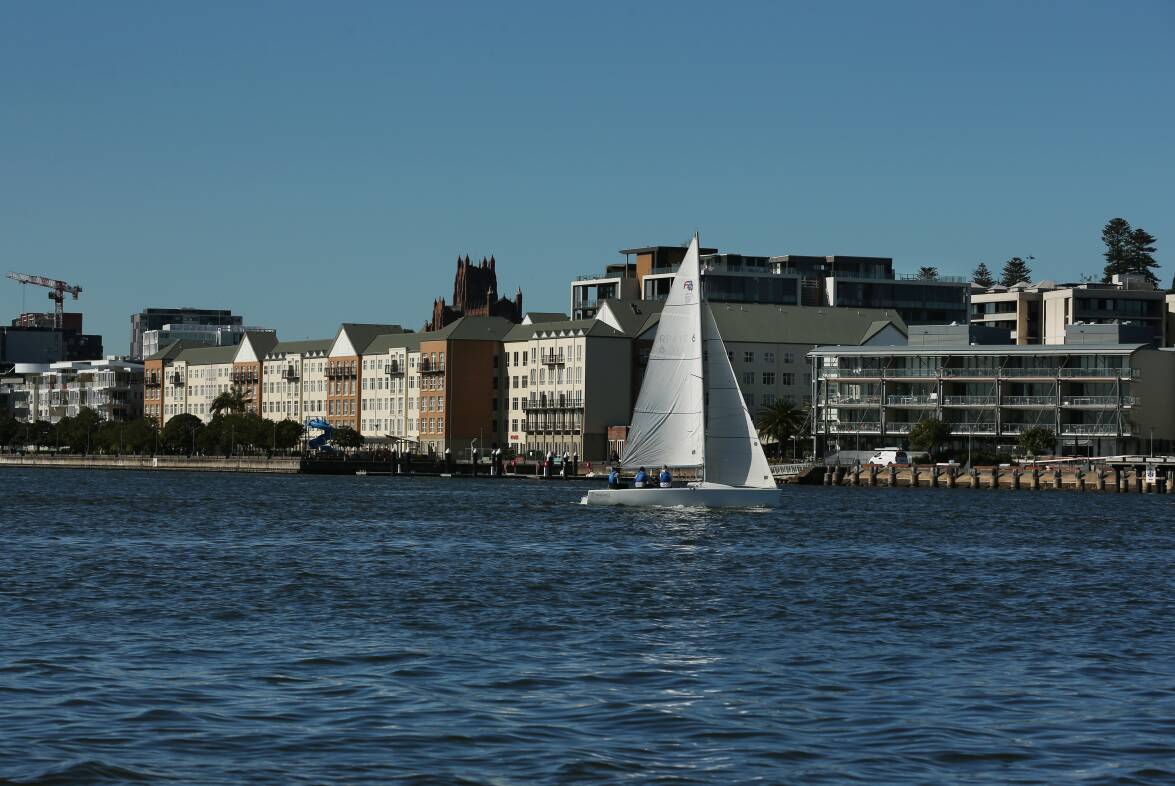
To experience that on-water activity, I join a mid-week event at the club involving a group called Saltwater Veterans.
About 10 former and serving Australian Defence Force and emergency services personnel are sailing for a bit of RnR, and for the camaraderie.
We are sailing on "Force 24" boats, which instructor Hugo Hamilton assures are easy to sail, and that the harbour is a fine place to learn.
"It's really good, because it's nice and protected," he says.
Although as the fleet of four ventures out of the marina, the young instructor says, matter-of-factly, "One thing about this harbour is you're always on a collision course to something."
So has he ever hit anything?
"Never," Hugo replies, smiling beatifically.
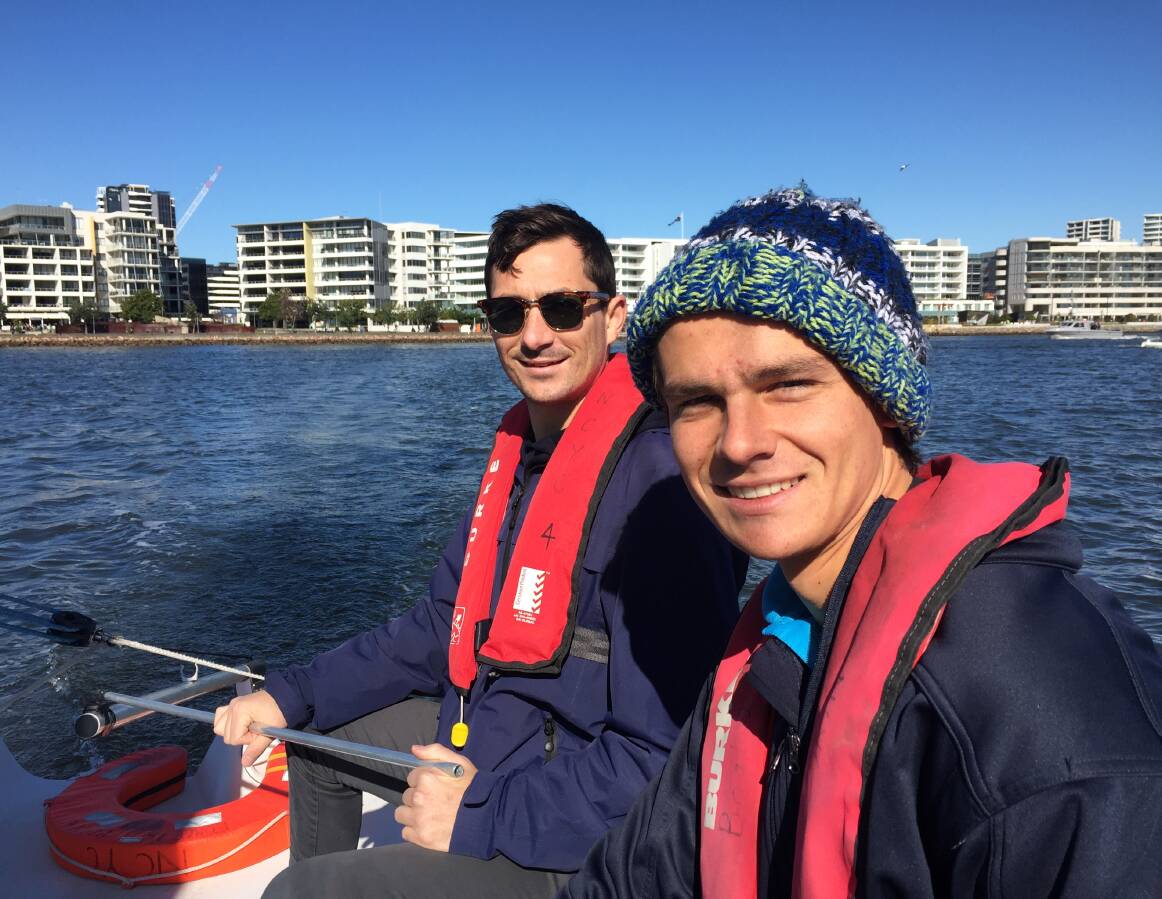
His comment does raise just how busy Newcastle harbour is now. It plays many different roles for a wide range of groups, from big business to small recreational clubs.
The sailing events in the harbour are held mostly in and around the Basin, and the sailors stay well clear of the commercial traffic, which have the right of way.
To those at the Port Authority of NSW, Newcastle harbour is a big enough waterway to accommodate all craft and the wide variety of interests they represent.
"It's the community's port," says Peter Ernst, the Head of Regional Ports for the authority. "So whether you're on a dinghy or in a Capesize vessel that's on its way to a coal terminal to take exports, it's a communal port. It always has been, and it always will be."
"I think that we have such a beautiful harbour right in the city, and it's not fair to say it's only for commercial shipping," adds Newcastle's Harbour Master, Captain Vikas Bangia. "It's about educating everyone, working together."
Before setting off for The Basin, where there are four berths for commercial vessels, Hugo the instructor has checked the shipping schedule on an app and declares, "No ships in our part of the harbour".
With a 10-knot westerly nudging our stern, we jibe along the harbour, and the boat pushes into The Basin.
Near the GrainCorp terminal on the western edge of The Basin, there is a dead spot, as the silos block the wind.

Hugo explains that for training, the built-up nature of the foreshore can be an advantage.
"You can use the harbour's physical attributes by seeking shelter, if you need to, or head to the open areas for the wind," he explains.
Since he is studying construction management at university, Hugo loves observing all the building going on, particularly along the Honeysuckle strip.
"I prefer looking at this harbour more than Sydney harbour," he says. "I get to see development out here that you can't see from the street."
"You see new angles," says Matt Williams. "I'm always seeing something new."
What's more, the changes on and around the harbour are, in turn, changing attitudes towards Newcastle in the sailing community further afield.
"I have a lot of people say this is not the city it was 20 or 30 years ago," says Matt Williams, who believes there's scope for Newcastle becoming a hub for the very large, and very expensive, pleasure craft known as superyachts.
In just the past couple of weeks, he says, two large pleasure craft worth many millions of dollars were delivered by ship into the harbour from Europe.
"A lot of the infrastructure is already here, and our large shipping port provides an easily navigated channel with huge potential for superyachts," he says.
"A marina to berth such pleasure craft would not only be a great economic driver for the area, but it would bring a prestige that would align Newcastle with the likes of Sydney, Melbourne and Brisbane.
"It's not just the money, there's also the jobs.
"Such a development could really influence where and how we see Newcastle in the future. It would be a great investment."
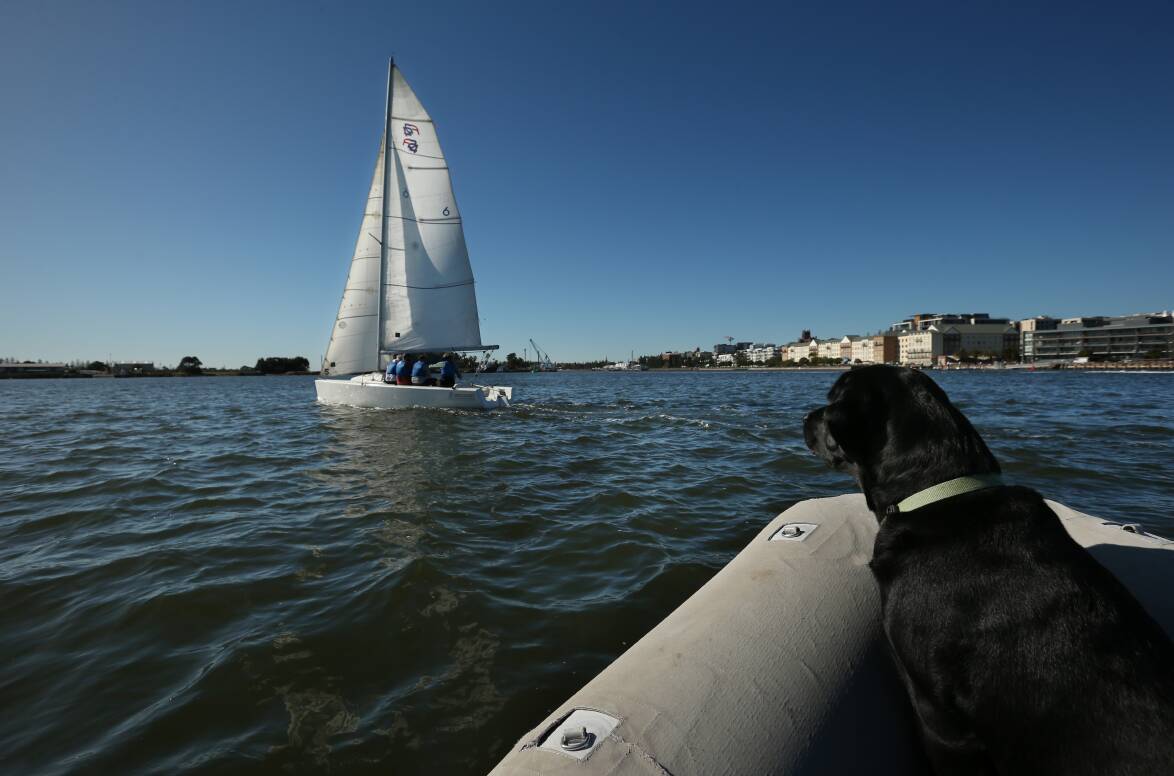
THE NCYC's marina houses mostly pleasure craft, but not exclusively. Waiting patiently at its berth in the marina is a vessel dedicated to helping boaters when something goes wrong and the fun sours.
It is Marine Rescue Newcastle's 10-metre boat, the Ron Calman.
The man whose long service as the rescue unit's commander inspired the boat's name sits in sight of the water, ready, as always.
For this is one busy rescue unit, with a couple of jobs each week in the harbour, and just as many calls off the coast to help boats in strife.
"At the start of the boating season, we have a lot of inshore jobs, in the harbour and up the river," explains Ron Calman.
After months of not being in the water, boats can be beset with a host of mechanical problems, so the call for help goes out to Marine Rescue Newcastle.
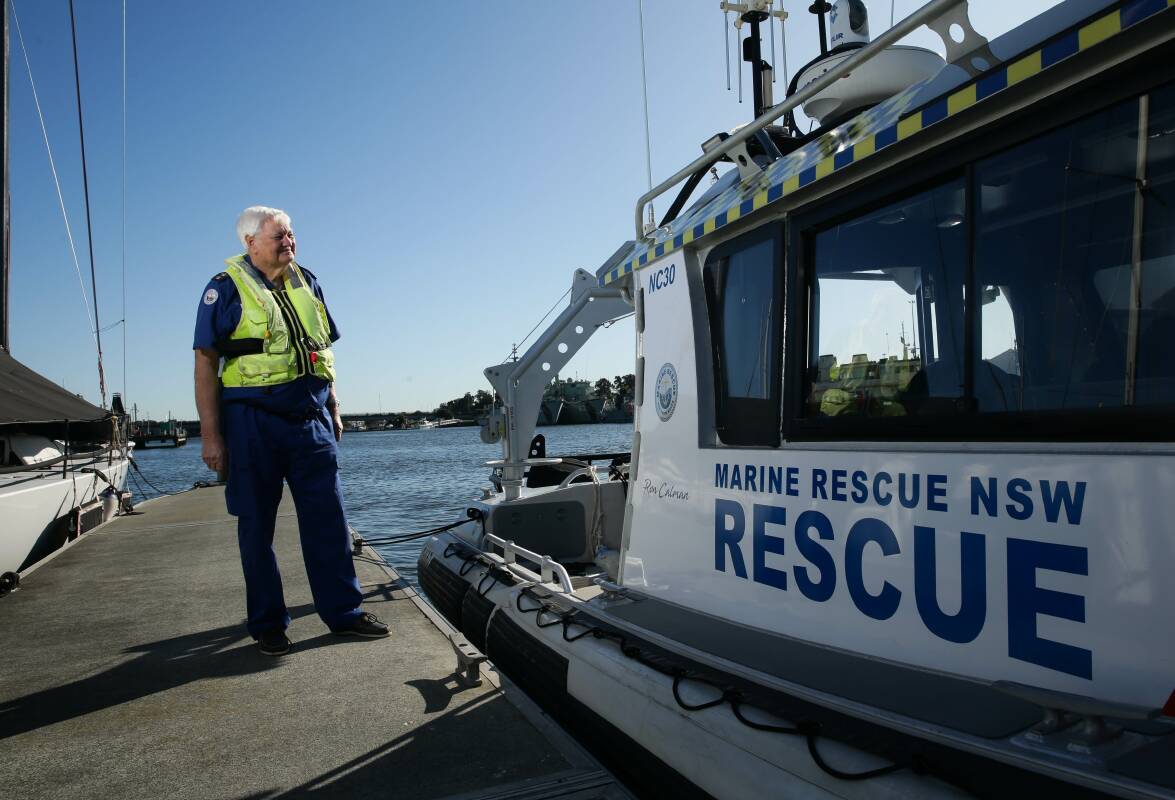
The unit's boat also escorts larger pleasure craft into the harbour, if called upon.
"When it's windy, a lot don't want to sail in, because of the shipping channel," says Ron Calman's colleague, Steve Raymond.
Before volunteering with Marine Rescue Newcastle, Ron Calman was an officer with the water police. So he knows this harbour very well.
"It's excellent, it means a lot to me," he says of the harbour. "The yachts, the sports groups, and being in Marine Rescue.
"It's a safe refuge."
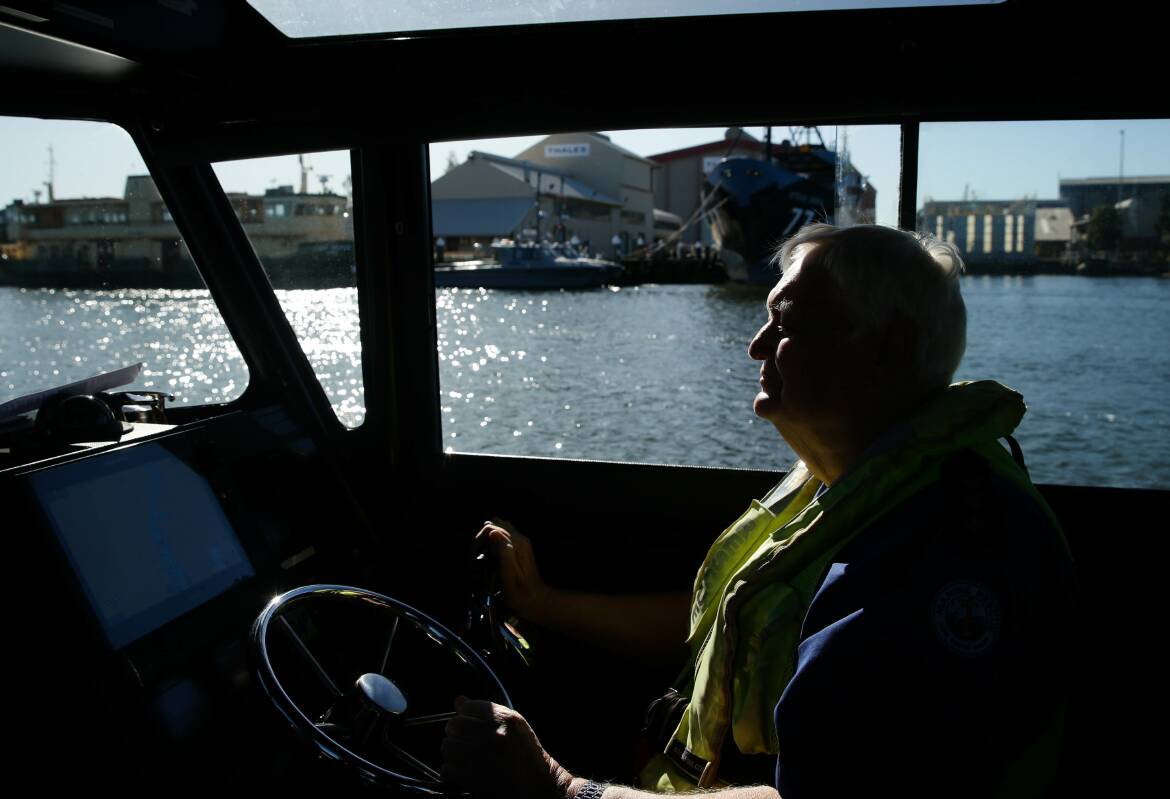
EVERY year, according to the Reverend Canon Garry Dodd, about 70,000 seafarers arrive in Newcastle on their floating workplaces, the ships freighting cargoes around the globe. And most of those mariners are oceans away from their home.
Which is why the Mission to Seafarers exists, to provide the closest thing to home for those sailors. Or, as Father Dodd, the Senior Chaplain to the Port of Newcastle at the city's mission says, "It's our job to care for those people."
The mission is based across the road from the Newcastle Cruising Yacht Club. From Hannell Street, the brick building presents a stolid face, but inside is all about warmth and feeling welcome.
Visiting seafarers can contact home, take time out reading or playing musical instruments, buy from the shop, or seek solace in the chapel.
A piece of Newcastle's maritime history is in the chapel. The bell from the bulk carrier Sygna, which ran aground on Stockton Beach during a dreadful storm in 1974, serves as a font.
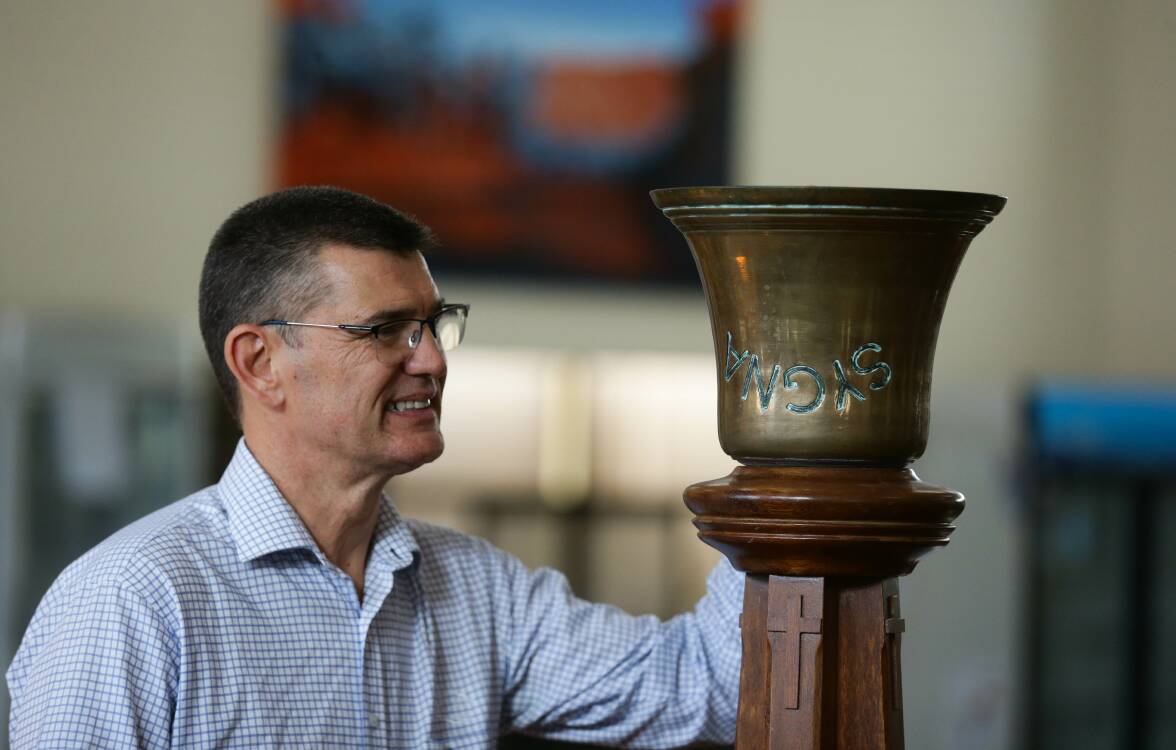
However, mostly what the visitors find in this building is a connection to the wider world once more.
"I think the thing that they do is feel," explains Father Dodd. "They feel the earth, they feel solid ground, they feel they're a part of society again. And our job is to make connections. They want to connect with home, themselves, their body, mind and soul, they want to connect with the broader community. They want to buy a few trinkets and maybe some lollies for the next leg of their journey. So our job is just to make those connections happen."
Yet those connections are becoming more and more brief, as the shipping industry seeks ever greater efficiencies and faster loading times.
"I think the average turnaround time for a vessel here in Newcastle, a coal vessel, is 12 hours," Father Dodd says. "During that 12 hours ... there's still a need to maintain the vessel, and you still have to be on board six hours before it's due to leave. So for some seafarers, they just don't get time off, or if they do, it might just be two hours. And so that might be their only chance in their 12-month contract that they get to touch dry land."
In the past, seafarers could be in port for weeks, even months, waiting for their ship to load and sail.
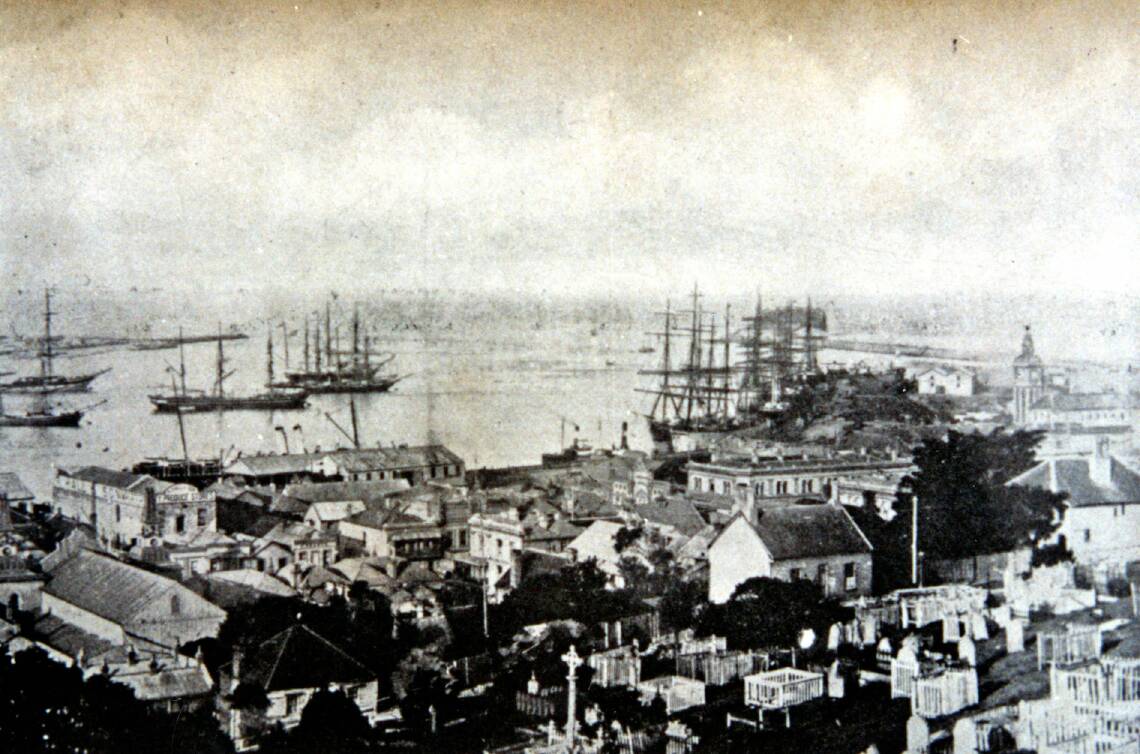
In his memoir, titled The Cape Horn Breed, recalling his young life on sailing ships, Captain William H.S. Jones wrote about a visit to Newcastle in 1906 "to load a cargo of Wallsend coal".
"More than sixty sailing-ships were in the harbour when we arrived, and some had been there, waiting their turn to go under the cranes, for two and three months," Captain Jones recounted.
The ship he was sailing on remained in port for 80 days, giving the teenage William Jones plenty of time to get to know Newcastle. He wrote about attending concerts and dances organised by the "Seamen's Mission", which was based in a galvanised-iron building at Stockton.
At social evenings, the retired captain remembered, "many friendships were made, some of them sentimental, but the young ladies of Newcastle were experienced in temporary affairs of the heart, and, when writing notes to their new-found friends in ships, sometimes ended with the sad but realistic words, 'Yours to the Nobby's etc'."
Stan Hugill, another seafarer who caught the final days of sail before becoming a well-known folk musician and author, remembered visiting Newcastle. He said of all the ports in the colonies, Newcastle was the one "that made the biggest impression on the windbag sailor".
"Here was a town given over entirely to the sailorman," Hugill wrote in his book, Sailortown.

Hugill wrote about Newcastle's pubs that "were known from Frisco to Liverpool", and the sailors' boarding houses. Some of those places were notorious for the practices of crimping and shanghaiing, to secure sailors, by any means possible, for ships that were short of crew members.
As a result, sailors - and even those whose lives were on land - would, often after a big night on the town, find themselves out to sea, having been tempted, tricked or even coerced aboard a ship.
William Jones also wrote about Newcastle's reputation for being a hotbed of crimping. He noted that in NSW Parliament, it was alleged, but denied, "that 70 per cent of the boarding house keepers and publicans of Newcastle were connected to these evil practices".
More than a century on, the Reverend Canon Garry Dodd, said Newcastle was renowned for having the infrastructure to support visitors from the sea.
"So a seafarer considers themselves lucky if they can come to the Port of Newcastle," he says.

However, with the seafarers spending so little time ashore, there is no longer the same interaction between the city and the visitors, and Father Dodd, believes the lives of the mariners, and the life of the city, are poorer for it.
And he wonders if Novocastrians' connection with the harbour is being diluted through the years, as fewer now work on or around the port. But more are now drawn to the water as a place to live, and to admire through their windows.
"We get to see the beauty and look at it, in terms of pleasure now, where I think a generation ago it was work, and we were connected by the sweat of our brow, where I think today we're connected by just the romance of these amazing vessels coming in," Father Dodd says.
"And we don't really know what they do when they come in or go, but we do see them as we're having a lovely time on the harbour."
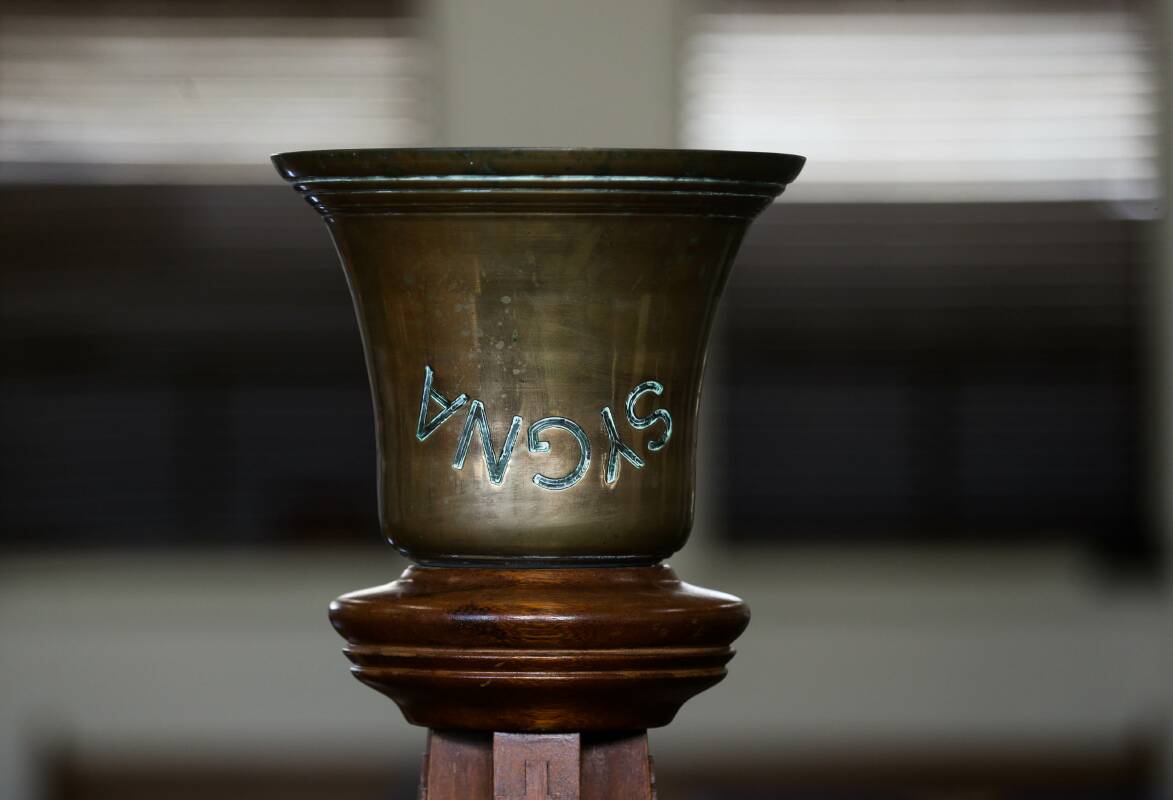
DOTTED around the harbour's edge, day and night, are those patient and hopeful souls who escape the demands of everyday life and work by casting a line and waiting for a fish to bite.
They share the water with professional fishermen, who prawn in the Hunter River's mouth and its lower reaches. And there are those who head to sea to earn a living from what they catch.
So for those fishermen, the harbour is truly a refuge after working out at sea.
"Particularly on a rough day, you go, 'Oh great, the boat's stopped moving'," says Brett Bollinger, who has been a professional fisherman cruising out of Newcastle for about 42 years. "Some days I'm glad the day's over and you're in flat calm."
What's more, he says, it is a deep, safe harbour, making it relatively easy to enter and leave in almost any weather.
"It's actually a very good harbour, as far as fishing goes," he says. "A lot of the east coast of Australia has bars and hard entrances to get to sea. Newcastle harbour is very safe.
"I always know if the sea starts building, I don't have to worry. I can still get in."
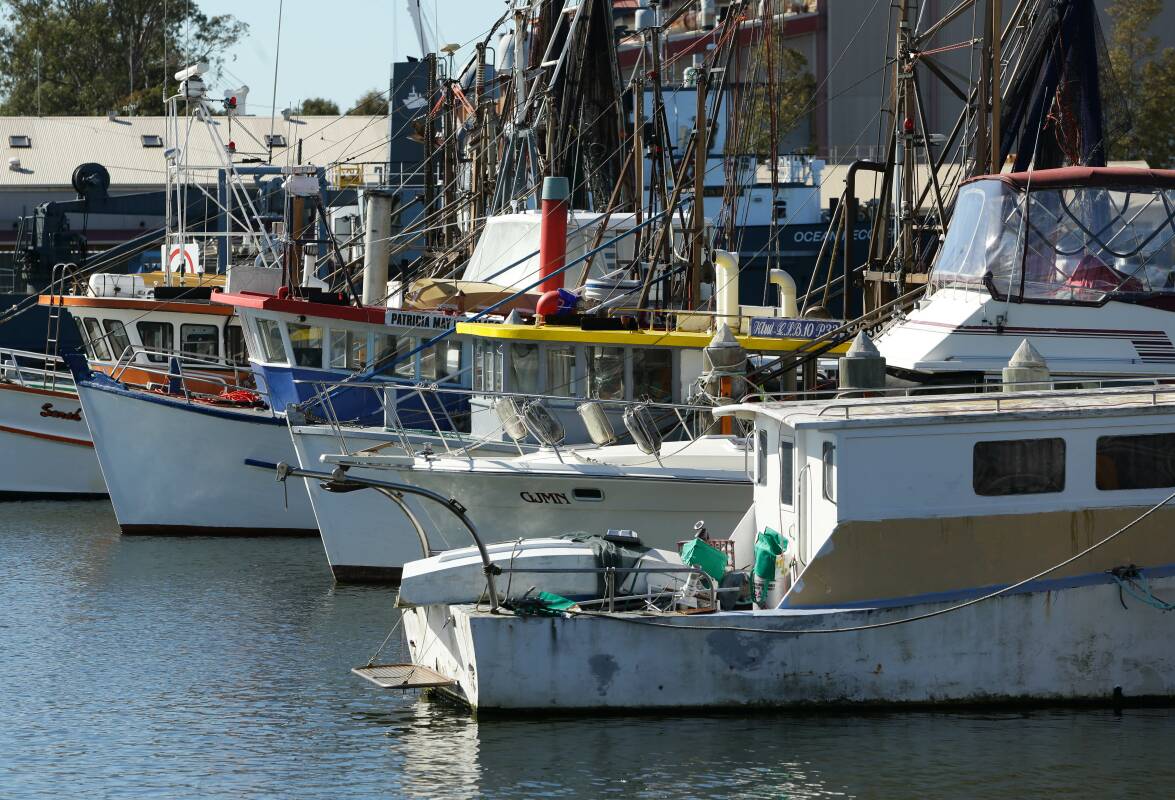
In his trawler, the Maxie B, Brett Bollinger trundles from the harbour entrance to the wharf outside the Commercial Fishermen's Co-operative at Wickham.
It is a harbour journey he has been making for more than his 42 years as a professional fisherman. For Brett Bollinger is the son of a fisherman, and he would tag along with his father, tying up the trawler a little further along from the present wharf, as the harbour narrows into Throsby Creek.
He recalls whenever Carrington Slipways launched a vessel from its shipyard on the opposite shore, the fishermen would move their trawlers because of the splash and wash.
Before reaching the co-op wharf during the inbound journey, Brett Bollinger sees other reminders of his past, and the harbour's.
He passes the site of the former State Dockyard, where he worked for two years as an apprentice shipwright. And on his left, where the residential and commercial complexes have sprouted on the Honeysuckle shore, he and other fishermen used to spread out their nets and wires along the old wharves to repair and maintain them.
"That is the most change I've seen in the harbour, and the quickest change," Mr Bollinger says of Honeysuckle.
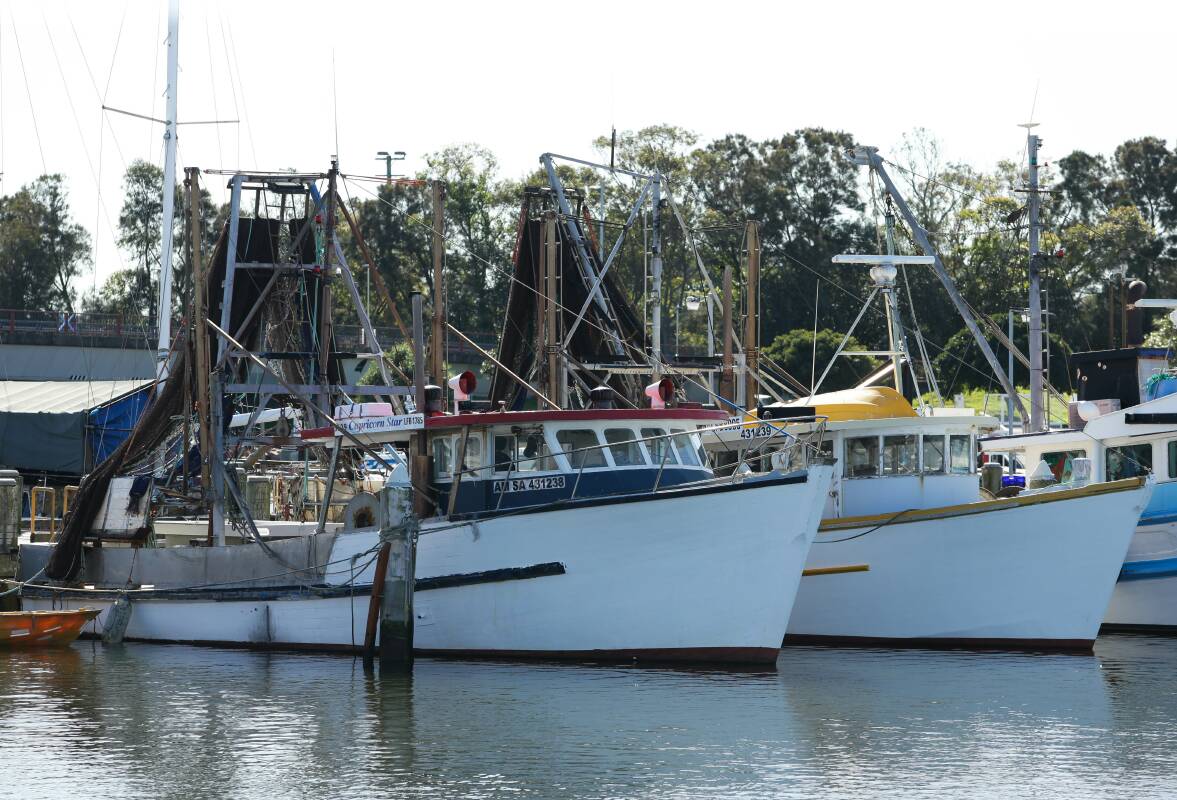
But there is another change he notes at the co-op wharf itself: the number of trawlers berthing there.
"There were a lot more boats," he says. "All the fishing restrictions and buyouts have restricted us down to a third, at least, that we had 40 years ago. So there are not a lot of fishermen around."
The co-op's CEO, Rob Gauta, says these days there are just two fishing trawlers and 10 prawning trawlers based at the wharf. But those local fishers, he says, are integral to the Newcastle co-op, which sells an estimated 900,000 kilograms of seafood annually.
"They are absolutely the backbone of the industry," Mr Gauta says. "They keep that supply coming in, and we'd do it tough without them. And people get fresh seafood, which is amazing."
As for the future, Brett Bollinger would like to see more facilities for the repair and maintenance of vessels in the harbour. He goes to the expense of cruising his trawler to facilities up the coast or south, because there are not enough options in Newcastle.
The fisherman reckons there's not just the potential for more slipping facilities around the harbour; it's a necessity.
"They're putting more boats in harbours, but no facilities for them," Mr Bollinger says. "It's like having a heap of cars and no service stations. There's plenty of room up near Stockton Bridge to put in a decent slipway."
In the midst of change, Brett Bollinger will continue to fish, bringing his catch in from the wide blue yonder to the co-op wharf, providing the city with seafood. As he says, "It's a way of life more than work."
Central to that cherished way of life is the harbour.
"It's like my front door to the ocean. When you're out in the open sea and come back in, you think, "I'm home".
.

Read more:
"Harbour Lives with Scott Bevan - Part One": Entering the Port.
"Harbour Lives with Scott Bevan - Part Two: From the 'Dog Beach' to Scratchleys.
"Harbour Lives with Scott Bevan" - Part Three: Along Honeysuckle.







